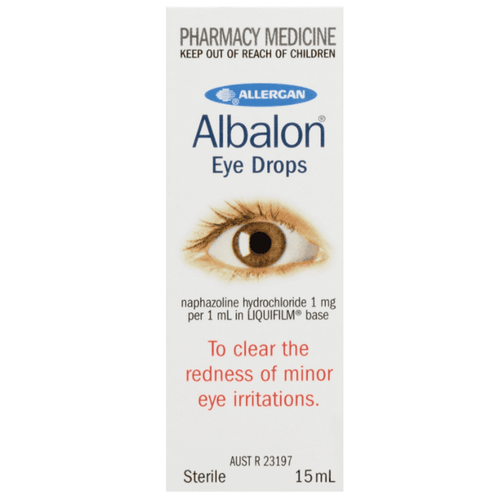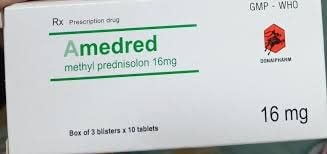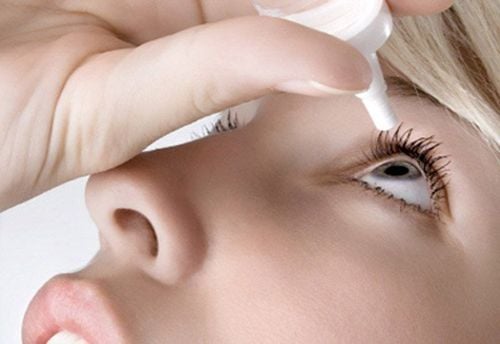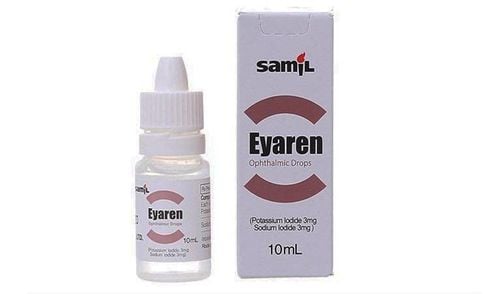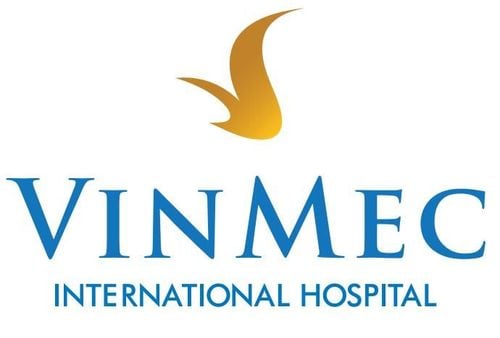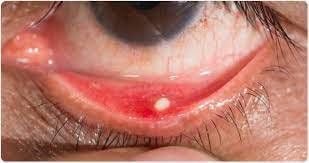This is an automatically translated article.
Conjunctivitis is an eye disorder involving the immune response of the cornea (the transparent layer in front of the iris and pupil) and the conjunctiva (the membrane that lines the eyelids and covers the whites of the eye). with bacteria. This article will introduce the concept, symptoms and treatment of blistered whites of the eyes.
1. The concept of nodular conjunctivitis
Corneal conjunctivitis is not an infection but an immune response to bacteria present on or around the eye. This disorder is more common in children aged 6 to 16 years and is more common in girls than in men.
The cause of nodular conjunctivitis is exposure to certain infectious pathogens. Some organisms that can cause white eye swelling include:
Bacteria, such as: staphylococcus aureus (Staphylococcus aureus), Mycobacterium tuberculosis, Chlamydia Parasites: eg Roundworm (Ascaris lumbricoides), hookworm ( Ancylostoma duodenale ) Fungi: Candida albicans Among them, the most common cause of swollen eye whites is S. aureus. This bacteria lives naturally on and inside the human body, including on the surface of the eyes and eyelids.
2. Symptoms of bulging conjunctivitis
Symptoms of blistering of the whites of the eyes range from mild to severe. For example, inflammatory nodules on the conjunctiva may cause only mild irritation, while inflammatory nodules on the cornea can cause significant pain and other symptoms. Typical symptoms of nodular conjunctivitis include:
Pain, similar to when there is a foreign body in the eye Sensitivity to light Redness of the eye Excessive tears One or more yellow or grayish papules on the surface eyes Some people with nodular conjunctivitis also develop blepharitis, which is an inflammation of the eyelids. The symptoms of blepharitis that can be observed are:
Swelling Discoloration Scaled skin at the edges of the eyelids Nodules associated with nodular conjunctivitis can persist anywhere from a few days to several weeks. In severe cases, corneal ulcers may develop. This can lead to complications, such as scarring of the cornea and decreased vision.

Lòng trắng mắt bị phồng rộp khiến bạn nhạy cảm với ánh sáng
3. Diagnosis and treatment of nodular conjunctivitis
The doctor will conduct a thorough physical examination of the eye to diagnose the disease. If a person also has blepharitis, the doctor may perform an eyelid culture to identify the causative agent.
Treatments for puffy whites usually include a combination of anti-inflammatory medications and antibacterial eye drops, along with proper eyelid hygiene.
3.1. Steroids The main treatment for swollen whites is topical corticosteroids. This medication reduces inflammation and swelling. When using topical corticosteroids for a long time, you need to reduce the dose as directed by your doctor to avoid recurrence of puffy whites.
3.2. Topical antibiotics Eye drops containing topical antibiotics help treat the bacterial infection associated with nodular conjunctivitis. This treatment usually lasts a few weeks.
3.3. Immunosuppressants Immunosuppressants are medicines that suppress the immune system, helping to prevent flare-ups of puffy eyes.
3.4. Limit light Some people with nodular conjunctivitis develop photosensitivity that can cause significant discomfort. Strategies to reduce discomfort include:
Keep indoor lights and screens dim Avoid direct sunlight, if possible Wear tinted glasses

Bạn có thể sử dụng thuốc nhỏ mắt khi lòng trắng mắt bị phồng rộp theo chỉ dẫn của bác sĩ
3.5. Eye hygiene The treatment of nodular conjunctivitis also includes practicing proper eyelid hygiene to treat blepharitis and relieve symptoms. Specifically:
Warm eyelids: Place a warm, damp washcloth on your eyelids to help remove eye scales and reduce irritation. You can apply warm compresses several times a day. Cleaning the eyelids: Cleaning the eyelids at the base of the eyelashes helps treat potential infections. Do this one to two times a day to help prevent symptoms from returning. To clean eyelids, first, make a solution of half a cup of warm water and 3 drops of baby shampoo. Then, you dip a cotton swab in the solution and then use the cotton swab to gently wipe your eyelids. Finally, wash your eyelids gently and thoroughly. As such, nodular conjunctivitis is a condition involving inflammation of the cornea and conjunctiva of the eye caused by the immune system overreacting to pathogens, such as bacteria, fungi, or parasites. Symptoms can include eye pain, watery eyes, and sensitivity to light, and spots on the eyes. When you have symptoms of the disease, go to an ophthalmologist for timely examination, advice and treatment. To examine and treat eye diseases, you can go to the Eye - Diseases specialist. Vinmec International General Hospital. The department has a comprehensive vision and eye health care function for children, adults and the elderly including refractive error testing, general examination, diagnostic ultrasound, laser treatment and surgery. In addition, ophthalmology also has the task of coordinating with other clinical departments in the treatment of pathological complications and eye injuries caused by accidents.
Please dial HOTLINE for more information or register for an appointment HERE. Download MyVinmec app to make appointments faster and to manage your bookings easily.




